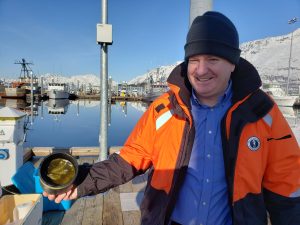Science Night returned this year, better than ever! This annual event, hosted by the Prince William Regional Citizens Advisory Council, focuses on research related to the safe transportation of oil through Prince William Sound.
Invasive Species
Plankton change with the seasons in Prince William Sound

A new Council study will help improve monitoring for invasive species, such as tunicates, that live on the sea floor or hard surfaces.
Researchers collected samples of zooplankton and used an identification technique called DNA metabarcoding. This technique allows researchers to identify multiple species from the same sample.
Genetic testing reveals no new marine invasive species
By Austin Love
Council Project Manager
Council testing plankton genes to supplement existing processes
The Council funds monitoring for marine species that could be introduced into Prince William Sound as a result of the operation of the Valdez Marine Terminal and associated oil tankers. If an invasive species, such as the European green crab, becomes established in Prince William Sound, they could cause serious economic and ecological harm.
Community Corner: Citizen scientists help the Council monitor our region
By Lisa Matlock, Outreach Coordinator
One of the Council’s federal mandates involves environmental monitoring. With a small staff and vast geographic area, this monitoring takes many forms. Monitoring is often done by staff or contractors, but some monitoring takes place thanks to the Council’s volunteers and interns – all citizen scientists.
Since 2014, the Council has had high school interns in the community of Cordova who help monitor for aquatic invasive species. Three interns, Sarah Hoepfner, Cadi Moffitt, and currently Cori Pegau, have volunteered to hang sturdy plastic “settling plates” in the Cordova harbor each spring, to be picked up in the fall. The interns check the organisms that accumulate on the plate for critters such as invasive tunicates and bryozoans.